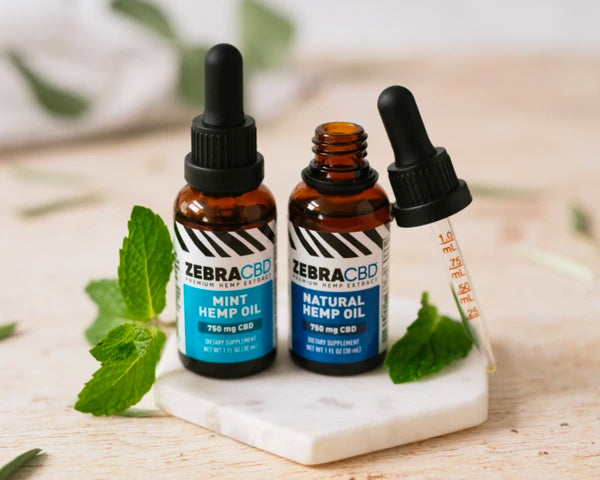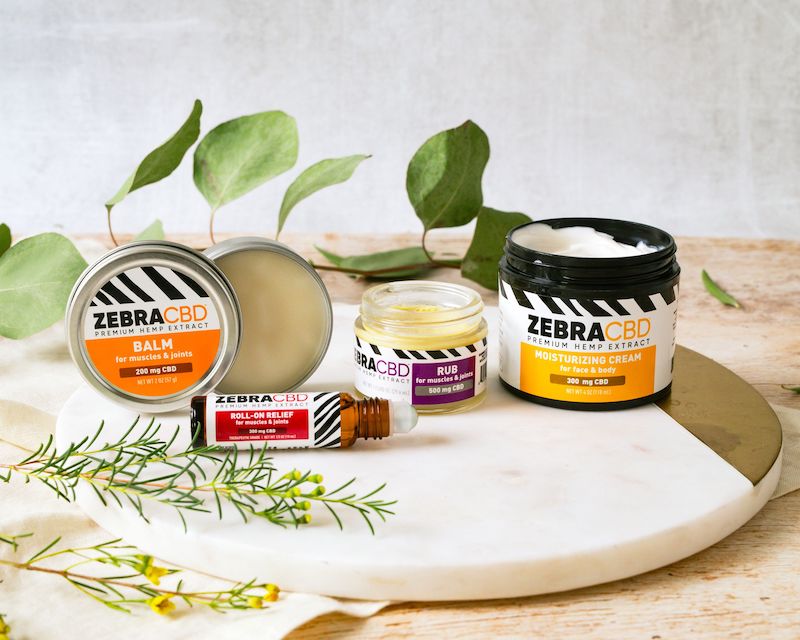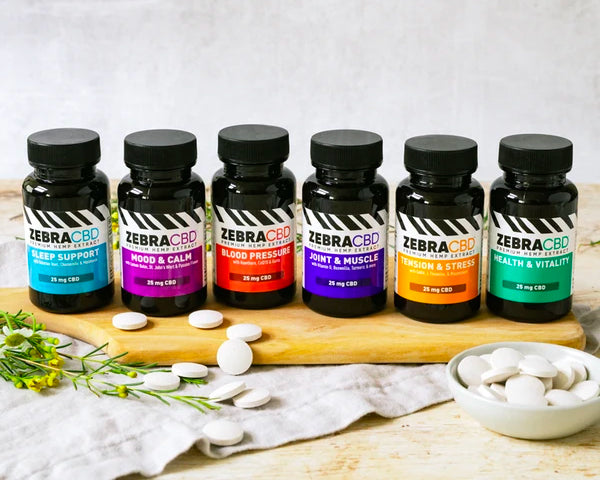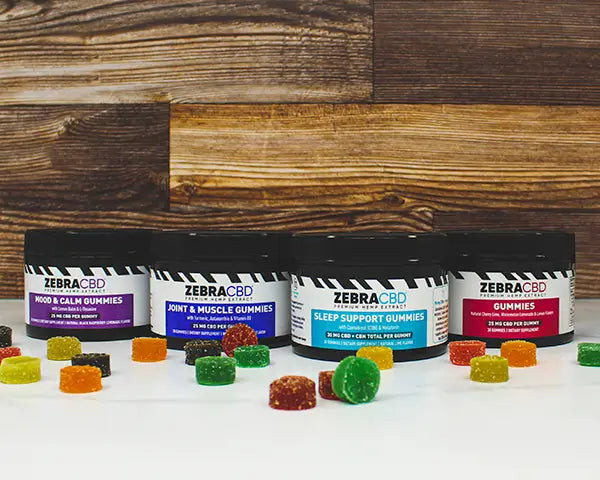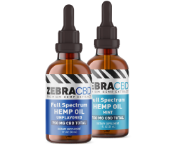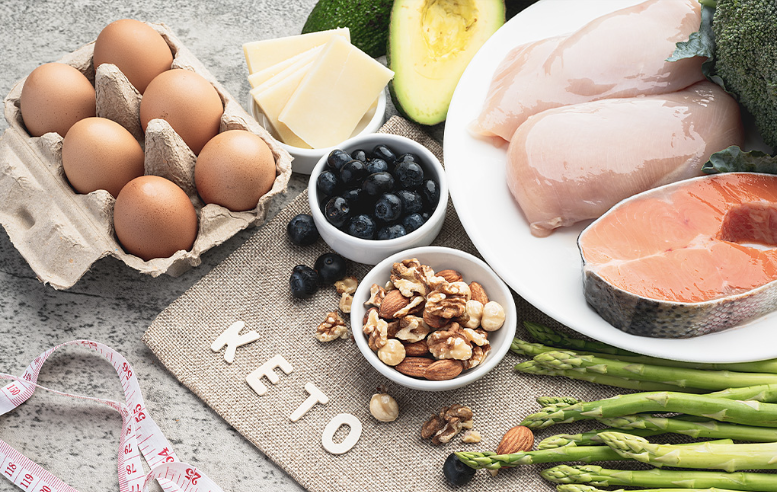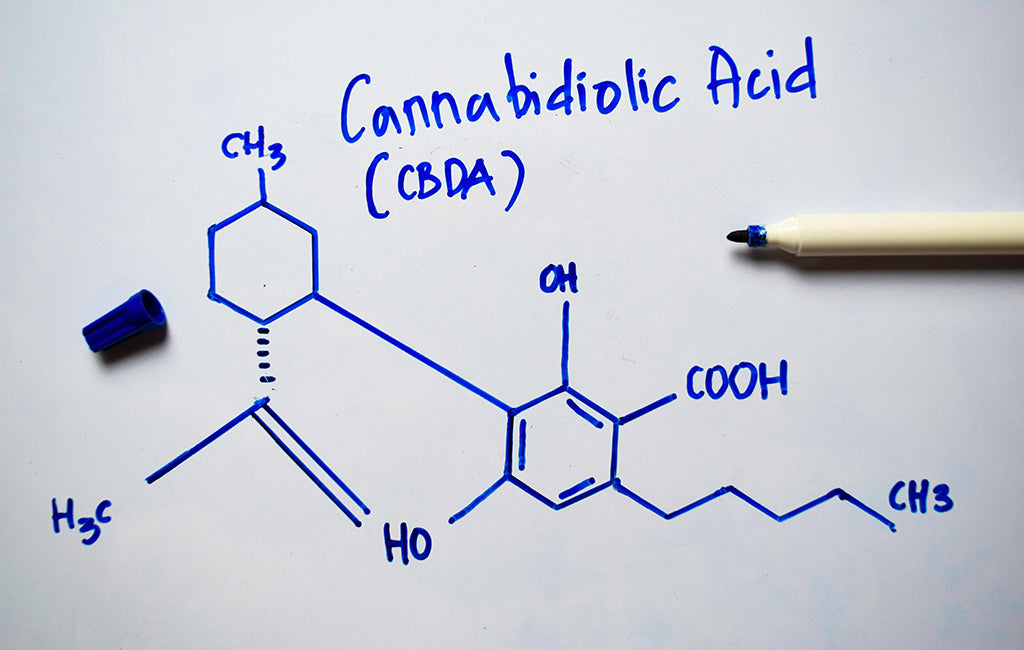
There’s a chance you’ve seen CBD oils, topicals and edibles lining the shelves of your local wellness shops and grocery stores. It’s quite clear that the ingestible cannabidiol is popular for its relaxation and wellness effects.
But what’s the deal with CBDA products?
Essentially, CBDA is a cannabidiolic acid that comes from the same hemp plant as CBD and has a more rapid onset than CBD.
To that end, follow along to learn more about the difference between CBDA vs CBD and how you can implement each cannabis compound into your pursuit of wellness.
What is CBDA?
If CBD is the calm child, CBDA is its holistic, hippie-touting mother. Essentially, unprocessed, CBDA is nontoxic and free of solvents. When CBDA is processed using a method called decarboxylation, carbon dioxide and hydrogen are removed from the cannabidiolic acid, creating CBD.
This process can occur naturally when the hemp plant is exposed to the sun, burned, smoked, vaporized or cooked.
Additionally, CBDA is more bioavailable than CBD. Bioavailability refers to the measurement of how quickly a substance is absorbed within the body. A substance with more bioavailability will be absorbed and dispersed throughout the body quicker, making it fast-acting and effective.
However, the effects from CBDA products may not last as long as a substance with lower bioavailability.
CBDA Benefits
Because CBDA is fast-acting and highly bioavailable, it requires a lower dose than CBD to treat certain conditions, such as:
- Stomach discomfort
- Infection
- Aches and cramps
- Physical discomfort
- Unhappiness
How Does CBDA Work?
In the bodies of all mammals, invertebrates and vertebrates comprise a vast system of neurotransmitters called the endocannabinoid system (ECS). Within this system, two types of receptors interact with the cannabinoids of the hemp plant:
- CB1 – Found in the brain and throughout the central nervous system, including the lungs, liver, kidneys and reproductive organs.
- CB2 – Found in the immune and gastrointestinal systems. When stimulated, they can reduce physical comfort and minimize aches.
These receptors influence the signaling and function of the central nervous system and play a role in memory processing, motor control, appetite, mood and sleep.
However, the cannabinoids in CBDA only bind with the CB1 receptors. This is the same type of cannabinoid receptor that binds with THC, a component found in the hemp plant that’s responsible for marijuana’s psychoactive effects (basically, what causes the “high” that’s associated with marijuana).
When working with the body’s endocannabinoid system, CBDA inhibits the COX-2 enzyme that catalyzes prostaglandins which affects many physiological and pathological processes within the body.
However, CBDA does not directly affect the central nervous system, which may be beneficial for those seeking something milder than CBD
How to Use CBDA
CBDA converts into CBD when smoked in its natural form. So, how can you benefit from CBDA’s effect?
You can use the hemp plant’s leaves or cannabis flowers as a culinary supplement in salads, smoothies and other dishes. The cannabis flower can also be used to make CBDA-rich tea. Just add the raw CBDA flower bud to a hot cup of water and you’re set!
Additionally, many cannabis products contain CBDA, especially if they’re raw. Look for the following:
- Raw CBD oil
- CBDA capsule
- CBDA tincture
What is CBD?
CBD is the byproduct of CBDA after it’s been introduced to extreme levels of heat. In nature, it can be found in the hemp plant. It’s also a component of the marijuana plant. However, CBD alone does not contain high levels of THC, meaning ingesting it will not have psychoactive effects.
After the 2018 Farm Bill legalized industrial hemp production, marketplaces around the country began selling CBD products on their shelves.
In general, CBD is less bioavailable than CBDA, meaning it takes the body longer to absorb it into the bloodstream, process and eliminate — a process known as pharmacokinetics.
However, its effects may be longer-lasting than CBDA when ingested.
In general, oral CBD like oils, CBD tinctures and edibles have the lowest levels of bioavailability since CBD is fat-soluble, which makes it more difficult for the body to absorb.
On the other hand, CBD is more bioavailable when smoked. Generally, CBD cigarettes will contain hemp buds that are then converted into CBD when burned. CBD drops and sprays are also easily absorbed by the body.
Benefits of CBD
CBD is known for its ability to calm and relax those who take it. It’s been widely touted as something that can supplement a healthy lifestyle and has many of the same potential benefits as CBDA. In general, people usually take a CBD product to address such things as:
- Mood
- Aches
- Stomach discomfort
- Sleep support
- Tension and stress
- Appetite
How Does CBD Work?
Like CBDA, CBD interacts with your body’s endocannabinoid system. This system is found throughout the central nervous, immune, reproductive and gastrointestinal systems, and plays a role in regulating a variety of bodily functions to keep our physiological systems in balance, including:
- Sleep support
- Mood
- Appetite
- Memory
- Reproduction and fertility
There are two types of endocannabinoids — anandamide (AEA) and 2-arachidonoylglyerol (2-AG) — and two types of endocannabinoid receptors — CB1 and CB2. Naturally, endocannabinoids can interact with or bind to either receptor to relieve aches and soothe discomfort.
Unlike CBDA and THC, CBD has little binding affinity for CB1 or CB2. Instead, the cannabinoids of CBD indirectly interact with these receptors, which promote a sense of overall well-being. Read our guide on the different types of cannabinoids to learn more.
How to Use CBD
Thanks to its legality, CBD is available in many forms throughout the United States. As addressed, how you choose to ingest CBD will affect how it’s absorbed and processed within your body :
- CBD oil – Perhaps the most common type of commercial CBD, oils can be absorbed under the tongue or infused into treats like CBD teas, cookies and smoothies. Of the CBD cohort, it’s one of the least bioavailable options. So, although it has long-lasting effects, it’ll take a while to feel anything — generally, 2 hours.
- Nebulizing – Nebulizing turns CBD into a mist that can be inhaled and enter the bloodstream in about 36 minutes .
- Nasal spray – Administered up the nose, a nasal spray is absorbed through the mucus membranes of the nasal passage. This method is fast-acting, typically showing effects within 10 minutes.
- CBD topicals – When placed atop the skin, CBD is absorbed quickly into the bloodstream. Transdermal application is an effective way to relieve inflammation or aches.
Final Rankings: CBDA vs CBD
So, is CBDA better than CBD? Not necessarily. There’s limited preliminary research on CBDA. However, some studies have shown that it’s a better inhibitor of the enzyme COX-2, which may reduce discomfort. Additionally, CBDA is more potent than CBD.
It may also be more effective than CBD at relieving stomach discomfort and nervousness. Nonetheless, it also must be noted that even at room temperature CBDA may decarboxylate, which may make it less effective.
CBD research is also sparse. However, many word-of-mouth reviews tout the effectiveness of CBD for pain relief, as a mood enhancer and as sleep support supplement.
Generally, CBD is more widely available, too, which may make it a better choice for those looking for an accessible option.
Test it Yourself With Zebra CBD
The clash between CBDA vs CBD is sure to develop as more research emerges about each component’s effects and potential therapeutic benefits. Generally, CBDA products are a more potent option that has shorter effects.
If you’re looking for something that goes the distance, then welcome to Zebra CBD.
We offer a variety of full-spectrum CBD products, including CBD topicals and tinctures, as well as edibles like our hemp pills and our CBD gummies for sale to help support your holistic well-being. Each CBD product is made from organically grown lab-tested hemp extract cultivated in the United States.
Our products come with a Label Accuracy Guarantee™, too. That means you can rest assured that our labels are 100% accurate. The products are also tested by certified independent third-party labs to ensure high-quality CBD that’s free from unnatural pesticides, heavy metals, herbicides and fungicides.
If you’re on or just starting your CBD journey, you’ve come to the right place. Enjoy the unique benefits of CBD today!
Sources:
- National Library of Medicine. A Systematic Review on the Pharmacokinetics of Cannabidiol in Humans. https://pubmed.ncbi.nlm.nih.gov/30534073/
- U.S. National Library of Medicine. Human Metabolites of Cannabidiol: A Review on Their Formation, Biological Activity, and Relevance in Therapy. https://www.ncbi.nlm.nih.gov/pmc/articles/PMC5576600/
- National Library of Medicine. Cyclooxygenase enzymes: regulation and function. https://pubmed.ncbi.nlm.nih.gov/14965321/
- U.S. National Library of Medicine. Cannabinoid Receptors and the Endocannabinoid System: Signaling and Function in the Central Nervous System. https://www.ncbi.nlm.nih.gov/pmc/articles/PMC5877694/

